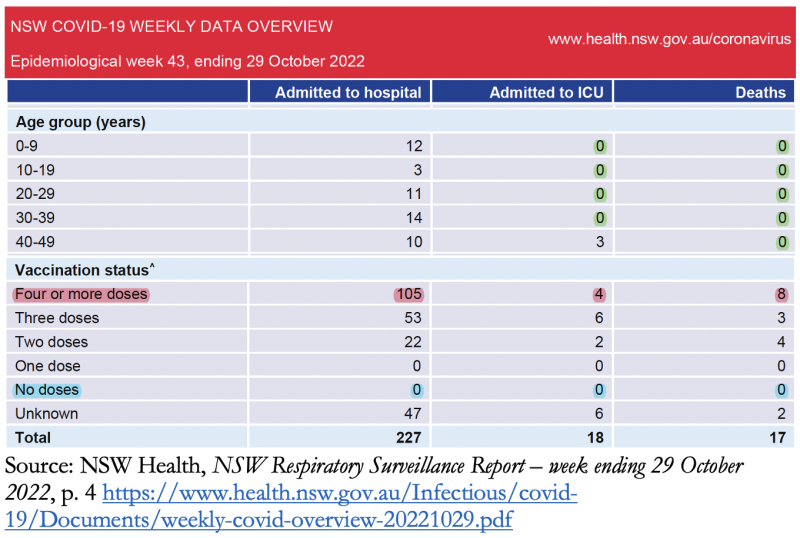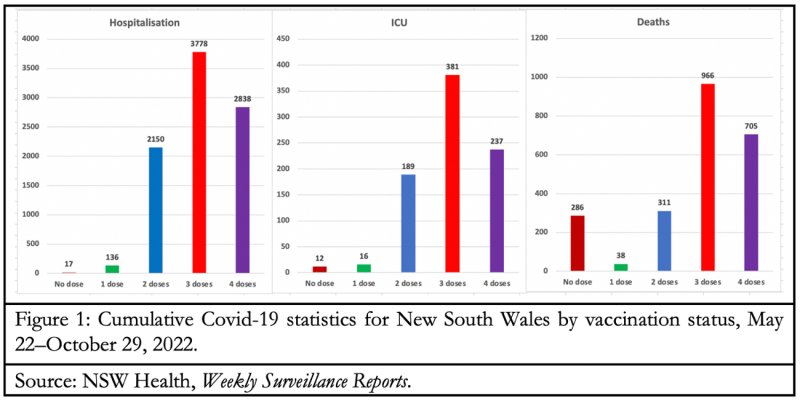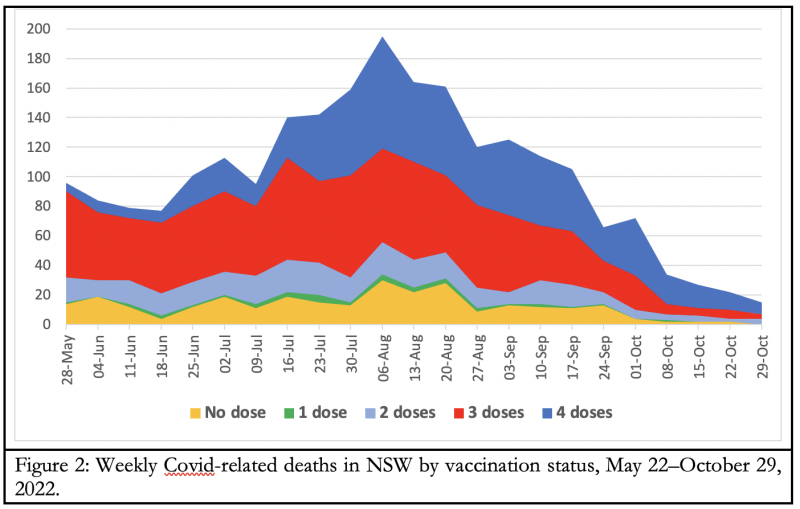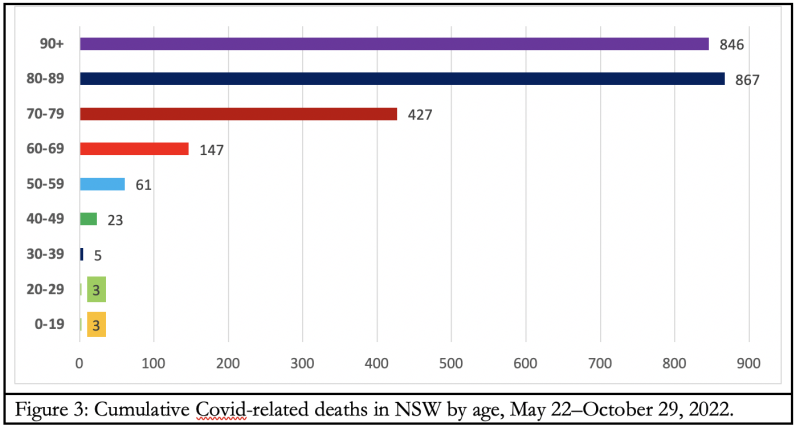
On October 23, an online poll on Covid controls and vaccines was published on news.com.au with some intriguing results. Conducted over one day, the survey attracted more than 42,000 votes for every question and more than 50,000 for some. Although the scale of the responses is impressive, the results show that the respondents were highly unrepresentative of the general population.
Official data from the health department show that nationwide, 95.2 percent of over-16s had received at least two doses of a Covid vaccine as of November 2, 72.2 percent were triple-vaccinated, and 41.7 percent had received four doses. But in the online survey, the percentages were 62, 26 and 16 for two, three and four shots, respectively.
Clearly, therefore, the site’s readership is not representative of the population and the survey attracted a disproportionate share of the Covid vaccine-hesitant.
Even with that caveat, some of the results are striking. “An overwhelming majority” are no longer concerned about Covid and do not wear masks in public. Half said they had caught Covid, with 6 percent getting it more than once. Around 37 percent said they were unvaccinated. Over two-thirds said the governments’ pandemic response had been too heavy-handed, 25 percent said the leaders had done the best they could, and 8 percent thought Australia had handled the pandemic as well as any other country.
Most strikingly of all, only 35 percent of the 45,000 vaccinated respondents in the poll said they would make the same decision again, while not a single unvaccinated person expressed regret for the decision.
The rest of this article provides clues as to why many people feel this way. I first look at the latest weekly data from New South Wales (NSW) Health covering the week of October 23–29, highlighting four major disconnects between two critical claims in support of the official narrative and what their own data show.
Claims (p. 2)
- “COVID-19 vaccines are very effective in preventing the severe impacts of infections with the virus.”
- “Over 95 percent of people aged 16 and over in NSW have received two doses of a COVID-19 vaccine.”
Data (p. 4)

- Not a single Covid-19 patient in NSW for the week – not one – who was admitted to hospital, or was admitted to ICU, or died, was unvaccinated: exactly 0 percent on all three metrics.
- Every single one of the Covid-19 patients in NSW for the week, whose vaccination status was known, who was admitted to hospital, or was admitted to ICU, or died, was at least double-vaccinated: 100 percent on all three metrics.
- Eight of the 15 Covid-related deaths – 53.3 percent – had received four or more doses of the Covid vaccine. As of November 2, the share of NSW residents eligible for four doses of the vaccine (30+ years old) to have received them was 43.3 percent. Thus, compared to their population, the four-dosed are over-represented by 23.1 percent in the Covid-related mortality in this reporting week. However, it’s surely reasonable to say that it’s almost certain that neither of the two who died with their vaccination status not known would have been four-dosed. If so, the share of the quadruple-vaccinated deaths drops halfway closer to their population share.
- Not a single person whose death with Covid-19 in NSW was recorded in this week was under 50 years old.
Questions
- Can you spot the gap/inconsistency/cognitive dissonance (pick your own preferred descriptor) between the claims that seek to bolster the highly effective vaccines slogan, and the data?
- What do you think the chances are that if consulted, “fact-checkers” will judge this to be “misleading,” “lacking context,” and perhaps even “dangerous?” No doubt they could also find a couple of ‘useful idiots’ to provide a helpful quote or two.
Of course, one weekly report cannot possibly have anything to say about trend lines. Figures 1 and 2 cover more than five months of NSW data. They cast serious doubts on claims of vaccine effectiveness with regard to hospital admissions, ICU admissions and even deaths. The claims of trials-based efficacy were hugely exaggerated by using relative rather than the more honest absolute risk reduction, while ignoring the age-stratified number needed to be vaccinated in order to prevent one hospitalization or death.
Because of the long-term harms caused by the fear narrative and the severity of the coercion employed to encourage multiple rounds of vaccine and booster take-up, governments really do need to subject vaccine regulators and public health bureaucrats to serious scrutiny. Otherwise, they will continue to suffer from falling trust in public institutions.
At the individual level, vaccines may still offer some protection to the elderly, especially to people with serious underlying health conditions. But with the known and suspected risks of side-effects in the short and medium terms, the as yet unknown long-term safety profiles, and rising numbers with natural immunity from infection, the decision really is best left to individuals after full discussion with their doctors.
The latter must not just be free, but must be encouraged to go over the balance of benefits and harms for their patients in order to get their informed consent.



Figure 3 shows that Covid-related deaths in NSW (including those with unknown vaccination status) have dropped from a peak of 200 in the first week of August to just 17 in the final week of October.
Fearing the onset of relevance deprivation syndrome should the country conclude the pandemic is over and time to move on, or rather move back to pre-Covid normality, some experts are inevitably issuing grim warnings about newer, dangerously infectious variants that will come ashore over the Southern Hemisphere’s autumn and winter.
Finally, Figure 3 also suggests that perhaps Australia should join the Scandinavian countries and Florida and drop booster recommendations for healthy people under 50 or 60 years old.
Source – https://brownstone.org/articles/reality-check-on-the-vaccine-narrative/
